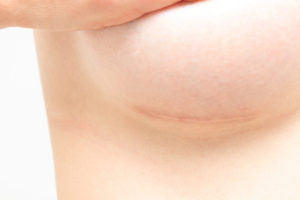
I will make this quick, as I don’t see myself using these external “bridges” anytime soon. They used these external “clips” applied during surgery to decrease tension on the wound. No doubt they help, but they remind me of staples, and likely because they are left on for 10 days in the photo in the article you can see some of the prong marks. So not something I will be rushing to for my cosmetic surgery patients quickly. But I liked the science in the article, and their analysis of what leads to worse scars.
“Force Modulating Tissue Bridges for Reduction of Tension and Scar: Finite Element and Image Analysis of Preclinical Incisional and Nonincisional Models.” Phew. That was a mouthful. It was a good study looking at external clips which go across the wound in a high tension wound. The wanted to see if it did decrease the tension. This reminds me a little of the embrace dressing, which I was part of the clinical trials for. See the original published article HERE. I don’t use that dressing often now, because I close my deep tissue really tightly, making my wound almost look like a speed bump, which reduces the skin tension.
They found in their study that these external bridges helped give 10% more compression than sutures, and 25% more compression between the sutures (in the spaces between sutures). They estimated 30% less tension was given over the treatment period of 10 days.
I liked their discussion in the article. Pearls from it:
- The tissue layer which appears to be responsible for making excess scar is the dermis, so reducing strain in the dermis is key.
- Tension affection nocioceptor fibers, decreasing tension may decrease pain.
- This wound tension closure they think is different from sutures or staples because it reduces tension rather than make a zone of high tissue forces. They think their device is different from other wound devices because their force is perpendicular to the wound, not parallel to it. They think they cause tissue eversion (an ideal in wound closure so the dermis tissue “kisses” the other side like a pucker, forming a speed bump)
What do I think?
It’s good to figure out why scars are bad. This study didn’t put in a lot of deep sutures in the dermis level, which I always do before I suture the skin. Would these deep sutures help take tension off the skin? Would it affect the wound suture forces they see? Would doing a running subcuticular stitch be different than doing 3 interrupted sutures? Do you have to leave the clips in for 10 days? Do they all have track marks from the clip?
I wish the study had compared how we really close wounds against the surgical clip and then did the analysis.
The information provided on this website is for general informational purposes only and does not constitute medical advice, diagnosis, or treatment. Always seek the advice of a qualified healthcare provider for any questions regarding your health or medical condition.
